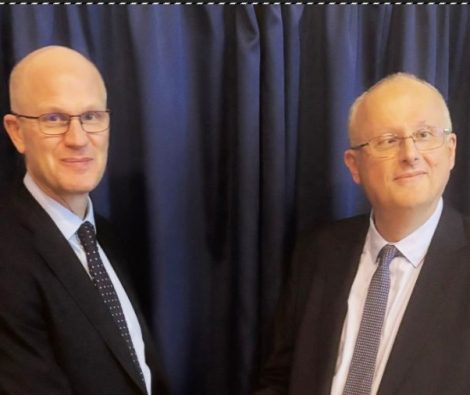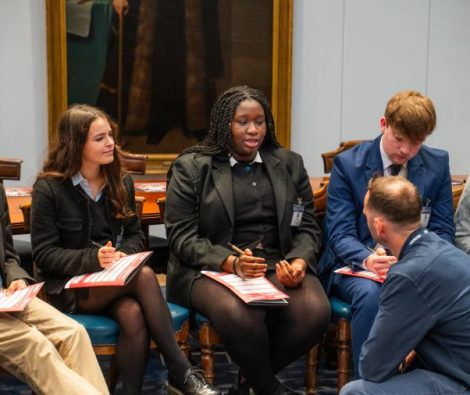A Timber Merchant, Landlord and Property Developer
Timber Merchant
It has long been thought by the Company that John Banks, our Master Haberdasher in 1717 and our Benefactor too, was a silk merchant with the Levant. However actual evidence for this occupation seems to have been more linked to fanciful thinking of a haberdashery related trade than borne from conclusive evidence.
Now following careful research by Mr Geoffrey Culshaw and other members of the family descendants whose ancestry is recorded in the bequests to kin of the BANKS Trust, it appears that he was in fact a timber merchant by trade. His name in connection with the timber trade even occurs in the Haberdashers’ Company Freedom Admissions, in the following entry for one of his apprentices:
13th July 1711 Samuel Bridgeman of Pauls Wharfe, Timber Merchant by John BANKS of ‘ditto ditto’ (i.e. meaning also of Pauls Wharfe, Timber Merchant).
Since then there have been traced several commercial business records in the 1690s for John Banks, which make it clear that he was indeed involved in the timber trade.

We do not know exactly when John Banks started out as a timber merchant, but perhaps this line of business was a natural progression for him, given he seems to have had an early training as an apprentice carpenter. While the record of the Haberdashers’ Company for the Freedom of John Banks simply shows that it was granted by Redemption in 1673, his apprenticeship in carpentry is revealed by the City of London Freedom which was also granted to him in the same year. This record shows that his early life was not in the City of London, referring to him as:
‘…John Banks, Carpenter having served an Apprentishipp to that trade in the Countrey & since the late dismall fire bin imployed in the rebuilding of this Citty…’ [Ref in – Court of Aldermen Minute Book, 10 March 1673. Corporation of London Records Office Source Ref Repertory 79, f.134.].
We have no way of knowing the social standing of his parents. However there is some evidence that suggests he may have come from a family that was comfortably off. The payment of his Redemption fine to the Company to obtain his Freedom in 1673, suggests that he had access to funds. We also don’t know if his family had been one of those who had fled London in 1666 (and that John was born there in around 1652), or whether his family had long lived in the countryside away from the City and that is where he was born.
Nevertheless, the fact is that he is described as ‘…imployed in the rebuilding of this City [since the late dsmall fire]…’ and this shows that soon after coming to London from the country, he was working as a carpenter on the rebuilding of London after the Great Fire of 1666.
Likewise we do not know with certainty John BANKS’ working life between 1673 and 1695, just that when aged about 43 years he appears in London trade records and is shown to be an established timber merchant. It would seem that he advanced from being a carpenter, to running a carpentry business and that that evolved into a timber supply one. His own status also evolved from a craftsman to a timber merchant of means.
The Freedom record of John’s apprentice Samuel BRIDGEMAN, as seen above, also proves that he was well established as a timber merchant by 1711. It is apparent that he had for some time had a timber yard in Pauls Wharf. This wharf is located in the City of London between Upper Thames Street and The Thames. In addition the trade records show that he had another wharf at Nine Elms which was on the Thames, just west of Vauxhall, and looking toward Battersea.
It seems that John Banks trade was with countries across the North Sea. The lists of his creditors from around the end of the seventeenth century catalogue people with Scandinavian sounding names like Jacobson and Peterson, and a certain Mr Jacob Larwood of Amsterdam.
Presumably John Banks’ timber was shipped to London from across the North Sea, and landed at his wharves either at Nine Elms or Paul’s Wharf. The most obvious market for the timber imported by him was the London construction industry, but no doubt there were other markets, as well. The archives of the Court of Chancery contain accounts of Banks’ commercial activities, which tell us much about his business as a timber trader. For the period 1695 to 1698 there is regular documentation and in them John BANKS’ states:
“The state of my Condishon as to what I owe and what I have to pay and how much I doe owe more than I have to pay (sic)”.
It is likely that that John Banks had to produce these annual statements in order to satisfy his creditors of the state of his business affairs. They were written in his own hand, and in some cases he has signed them.
There are some large values involved in these statements. For instance, the values are stated as at each Christmas Day for the period 1695-8, in respect of both the timber yards at Paul’s Wharf and Nine Elms and in 1695 the combined value of stock and debtors at both these wharves was £2879. By 1709 this had risen to £7449.
The growths in values that these figures suggests that the timber business was expanding at a prodigious rate. Using Bank of England conversion tables, in 1998 values, John Banks’ total stocks in the late 1690s were worth approximately £374,000.
Landlord
The evidence of John Banks’ will was that in the final years of his life he owned two residences. One house was in the Parish of St Benet, Paul’s Wharf, which he referred to in his will of 1719 as his “dwelling house”, and the other at Nine Elms, Battersea. The first of these houses was in the City of London, near St Paul’s Cathedral, and the second was on the South side of the Thames, in what was then Surrey.
Both St Paul’s Wharf and Nine Elms are known to have been the sites of his timber yards and his Will suggests that he may have built his houses in the environs of his yards. Accounting information shows that earlier in his life John Bankes had held several other premises. For example, in 1697 he listed among his assets “The equitie my Great House in Goodmans Fields”. Goodman’s Fields is in the Bethnal Green area, to the east of London
It is clear from his Will that John Bankes also owned several leasehold estates at the time of his death. His instructions were that the properties forming his Whitechapel estate, located “in and about George Yard” in the parish of St Mary, Matfelon, were to be divided amongst certain members of his family.
To the West of the city of London Bankes held another leasehold estate. According to his Will this consisted of “severall houses buildings and ground in or near Poltney Street, Windmill Street and Princes Street in the parish of St James, Westminster”. It consisted of 72 houses and was left in trust to the Master and Wardens of the Haberdashers Company.
Many surviving documents relate to people renting premises from John Banks. A lease dated 1 February 1709 constitutes an agreement between him and a certain Henry Howard, Silk Dyer, of St James, Westminster. It was of seven years’ duration effective from 25 March 1709, and concerned a ‘messuage or tenement’ on the west side of Poultney Street. The property included a yard and a shed, and the rent payable was £16 per annum, payable on the usual four feast days. Henry Howard was to be responsible for the maintenance of the property, whilst John Bankes was to be allowed access to the property for inspection purposes.
The particularly interesting aspect of this document is that it had attached to it an endorsement, which provides a fairly detailed description of the property. It was a shop, with living accommodation attached to it. It seems to have been fitted out quite comfortably, and included wood panelling. All the windows appear to have been sash windows, and presumably were of glass.
Yet another estate owned by BANKS in 1717 consisted of ‘four severall messuages which I hold by five severall leases’ in Great Queen Street, now in the parish of St Giles in the Fields. These were left to his wife Elizabeth, possibly as part of their marriage settlement.
Property Developer
During his lifetime, Banks was involved in business transactions involving the buying, development, selling and leasing of property. The earliest such transaction traced is dated 1678/9, when he was recorded as building property on a piece of leased land at St Margaret’s Hill, Southwark. The property was described as: ‘All that close piece or parcell of ground whereon a new brick messuage or tenement is lately erected by the sayd John Bankes.’.
The document was accompanied by a plan of the property, which was L shaped and situated on the south side of Counter Lane. Banks probably bought it as an investment, with the building work that was going on in the City of London in the aftermath of the Great Fire of 1666, it seems likely that the property market would have seemed an attractive investment opportunity. Then on 20 June 1683 he signed a similar deal in connection with premises in Duke Street, St James, Westminster.
In 1702 John Banks’ Southwark properties included a number of houses in Coke & Hart Yard and by 1715-16 Banks was in possession of six houses at Mary Gould Alley, off the Strand.
During the period 1703-5 John Banks’ accounts include references to properties at the Temple in the City of London. It appears that he carried out quite prestigious building work in that area. The historian Hugh Bellot tells us that:
“Between the old Crown Office and the site of Harcourt Buildings, S. of Crown Office Row, a small building was erected in the year 1703 by John Banks, a Haberdasher in the City. It had a 10ft frontage and the ground floor opened out into the garden under the paved walk or terrace, whilst the first floor was on a level with the terrace.
With the ground floor was connected a summer house, and the whole reserved for the use of society. Below this building John Banks was licensed to build three sets of chambers with a frontage of 50 ft apiece and a depth of 27 ft, of three stories each. The front windows were “to be all sash frames and sashes glazed with crown glass.” These buildings stood until 1833, when they were replaced by another development.
So today as well as the Company, Battersea United Charities includes John Banks as one of its benefactors. This Battersea bequest no doubt appearing in his will in recognition of the Nine Elms Timber Yard and the ‘poor…inhabitants of the Parish of Battersea..’ some of whom were employed there by John Banks.
Dr David Bartle, Archivist



